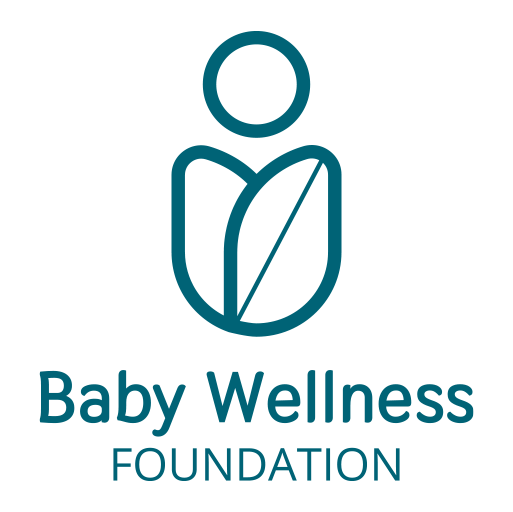Approfondimenti scientifici
Time Change: The Newborn’s Adaptation to Autumn and the Development of the Circadian Rhythm
In autumn, the transition from daylight saving time to standard time represents a subtle but significant environmental variation capable of influencing the delicate neurophysiological mechanisms that regulate sleep and wakefulness in newborns and young children.
During the first months of life, the circadian rhythm is still maturing and is highly sensitive to external stimuli, particularly the light-dark cycle, which acts as the main biological synchronizer (zeitgeber). The reduction in natural daylight hours and the artificial shift in time can temporarily alter the homeostasis of the sleep-wake rhythm, affecting mood, sleep quality, and endocrine regulation.
The environmental features of autumn, combined with the time change, play a crucial role in modulating physiological adaptation in newborns, with possible differences between babies born in this season and those born at other times of the year. Understanding these dynamics allows for the identification of preventive and corrective strategies that promote healthy biological rhythm development and the child’s overall psychophysical well-being.
The Circadian Rhythm
The circadian rhythm is a biological cycle of approximately 24 hours that regulates daily physiological processes such as sleep, body temperature, hormone secretion, and feeding behavior. In newborns, this rhythm is not present at birth but gradually develops in the first weeks of life, closely linked to external stimuli (zeitgebers) such as light, ambient temperature, and social interaction.
From a neurobiological perspective, the circadian rhythm is orchestrated by the suprachiasmatic nucleus (SCN) of the hypothalamus, the structure that functions as the “central biological clock.” Its postnatal maturation is essential for synchronizing internal rhythms with environmental cycles.
Stages of Circadian Development
- 0–6 weeks: no established circadian rhythm; irregular alternation of sleep and wakefulness.
- 6–12 weeks: onset of rhythmic melatonin secretion (especially in response to darkness).
- Around 6 months: the sleep-wake rhythm becomes stabilized in response to light-dark cycles.
The Time Change and the Newborn: Why It Matters
The shift from daylight saving time to standard time, which in Europe occurs between late October and early November, creates an artificial variation in the light-dark cycle, with earlier morning light and earlier evening darkness.
These changes can:
- Interfere with the maturation of the circadian rhythm, especially in infants between 1 and 6 months of age.
- Alter environmental signals that regulate melatonin production, the key sleep-inducing hormone.
- Affect sleep quality and distribution during the first few days after the time change, leading to difficulties falling asleep or early awakenings.
Because newborns lack fully autonomous regulatory mechanisms, their sleep-wake rhythm is more vulnerable to even slight environmental changes.
Newborns Born in Autumn: Circadian Development and Seasonal Adaptation
Babies born in autumn must regulate their circadian rhythm at a time when the surrounding environment is undergoing profound change, progressive reduction of daylight, greater exposure to darkness and indoor life, and the transition from daylight saving to standard time.
From a physiological standpoint, autumn-born infants may show:
- Earlier onset of endogenous melatonin production (triggered by darkness).
- A tendency to fall asleep earlier, possibly leading to early awakenings.
- Risk of an advanced sleep-wake phase, especially if the home environment lacks sufficient afternoon light stimulation.
When comparing babies born in autumn with those born in other seasons, interesting differences emerge:
- Spring/summer-born infants: exposed to longer daylight hours, which promote a smoother, more gradual regulation of circadian rhythms.
- Winter-born infants: experience even less daylight, but are born into an already stable standard-time environment.
- Autumn-born infants: face a “double transition”, decreased natural light and a time change, making them more susceptible to temporary maladjustment.
Potential Signs of Circadian Maladaptation in Infants:
- Evening or nighttime irritability
- Early awakenings or fragmented sleep
- Difficulty aligning to new feeding or sleep schedules
Strategies to Support Adaptation
- Ensure exposure to natural light during the central hours of the day to reinforce environmental cues.
- Maintain consistent routines for feeding, bathing, and bedtime.
- Use gradual evening lighting to simulate twilight and encourage melatonin secretion.
- Avoid overstimulation after sunset (e.g., bright lights, screens, active play).
- Gradually adjust sleep times by 10–15 minutes per day for 3–5 days before and after the time change.
Natural Light, Seasonal Change, and Hormonal Influence on Infant Mood
The switch from daylight saving to standard time significantly alters the light-dark cycle perceived by children: mornings become brighter earlier, while darkness falls sooner in the afternoon. This shift in photoperiod can have neurophysiological effects, particularly on the neuroendocrine system and mood, since sunlight is one of the main synchronizers of the biological clock. Exposure to natural light acts directly on the hypothalamus via the retinohypothalamic pathway, transmitting signals to the SCN, which coordinates circadian rhythms.
In response to sunlight, several key hormones are modulated:
- Cortisol: Serum cortisol levels follow a circadian rhythm, peaking in the morning to promote awakening and alertness. Morning light strengthens this physiological peak, supporting wakefulness and responsiveness.
- Melatonin: Secreted by the pineal gland, melatonin induces sleep and is inhibited by light and stimulated by darkness. Early evening darkness promotes earlier melatonin secretion, which can cause reduced energy and a more subdued mood, especially in sensitive children.
- Serotonin: A precursor to melatonin and a regulator of mood, serotonin synthesis is boosted by sunlight exposure. Fewer daylight hours in autumn may reduce serotonergic activity, impacting mood, exploratory behavior, and vitality.
Numerous studies have highlighted the link between natural light exposure and:
- Regulation of mood and emotional responsiveness;
- Improved sleep quality through circadian rhythm alignment;
- Reduction of mild seasonal affective symptoms in predisposed children (mild forms of SAD – Seasonal Affective Disorder).
In light of the time change and reduced daylight hours, major pediatric and child neuropsychiatric societies (SIP, SINPIA, AAP) recommend:
- Promoting morning and early afternoon exposure to natural light, even briefly, preferably outdoors (e.g., park, walk, terrace).
- Avoiding screen exposure in the evening to prevent interference with endogenous melatonin secretion.
- Establishing regular daily routines with active daytime periods and predictable evening rituals to reinforce the sleep-wake cycle.
- For older children (around 3–6 years), full-spectrum light lamps can help in cases of significant difficulty adjusting to early darkness.
The transition to standard time, combined with the natural reduction in daylight during autumn, represents an important period of adjustment for the developing organism. Conscious environmental management can support a more harmonious and physiological adaptation to seasonal and time changes, promoting the child’s overall well-being.
LeBourgeois MK, Hale L, Chang AM, Akacem LD, Montgomery-Downs HE, Buxton OM. (2019). Circadian Rhythm Disruption in Early Childhood: A Critical Period for Sleep and Brain Development. Sleep Health
Rivkees SA. (2020). Developing Circadian Rhythmicity in Infants. Pediatric Clinics of North America
Münch M, Bromundt V. (2018). Light and chronobiology: implications for health and disease. Dialogues in Clinical Neuroscience
Thomas KA, Burr RL, Spieker S, Lee J. (2020). Maternal and infant activity: synchrony and impact on infant circadian rhythm development. Journal of Developmental & Behavioral Pediatrics
Moore RY. (2021). The suprachiasmatic nucleus and circadian timekeeping. Dialogues in Clinical Neuroscience
American Academy of Pediatrics (AAP). (2023). Recommendations for Healthy Sleep in Infants and Young Children.
World Health Organization (WHO). (2021). Guidelines on physical activity, sedentary behaviour and sleep for children under 5 years of age.
Società Italiana di Pediatria (SIP). (2022). Linee guida sul sonno sicuro e fisiologico nei primi mesi di vita.
Società Italiana di Pediatria Preventiva e Sociale (SIPPS). (2023). Sonno, Ritmi Circadiani e Salute Infantile.
UNICEF. (2020). Early Childhood Development and the Importance of Sleep in the First 1000 Days.
Golden RN, Gaynes BN. (2020). Bright light therapy for depression in children and adolescents. Current Psychiatry Reports
Mindell JA, Leichman ES, Du Mond CE, Sadeh A. (2022). Sleep patterns and sleep disruptions in early infancy and maternal perceptions. Sleep Medicine
Kennaway DJ. (2019). Melatonin research in pediatric sleep medicine. Journal of Pineal Research
Liu X, Sun J, Wang Y, Yang L. (2021). The effect of ambient light exposure on the regulation of circadian rhythm in infants. Chronobiology International
Salzarulo P, Fagioli I. (2022). Sviluppo del sonno nei primi mesi di vita: aspetti neurofisiologici. Rivista Italiana di Pediatria

